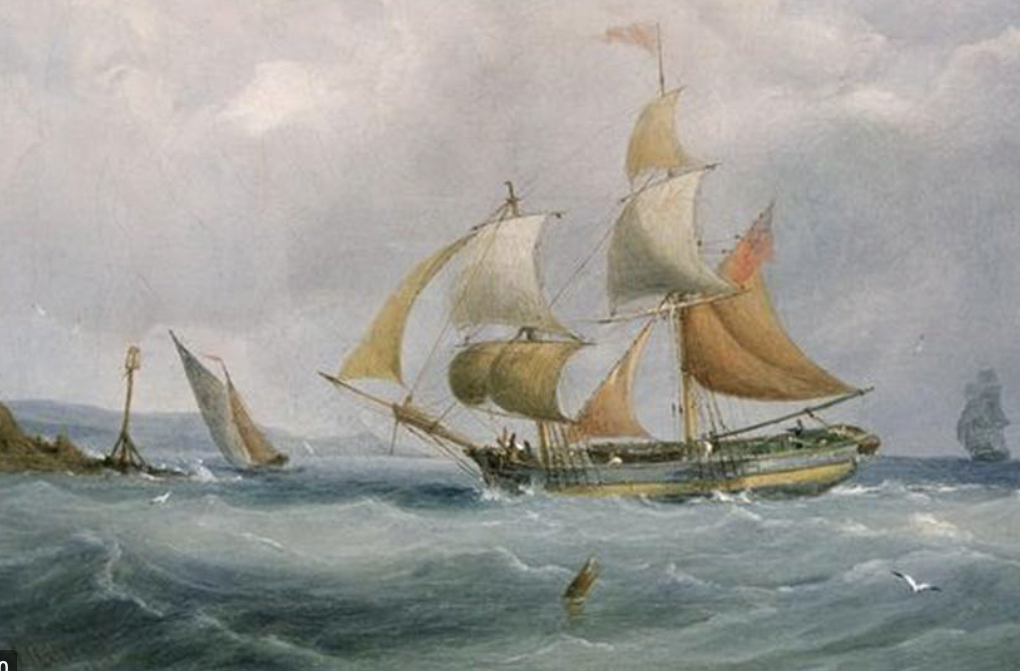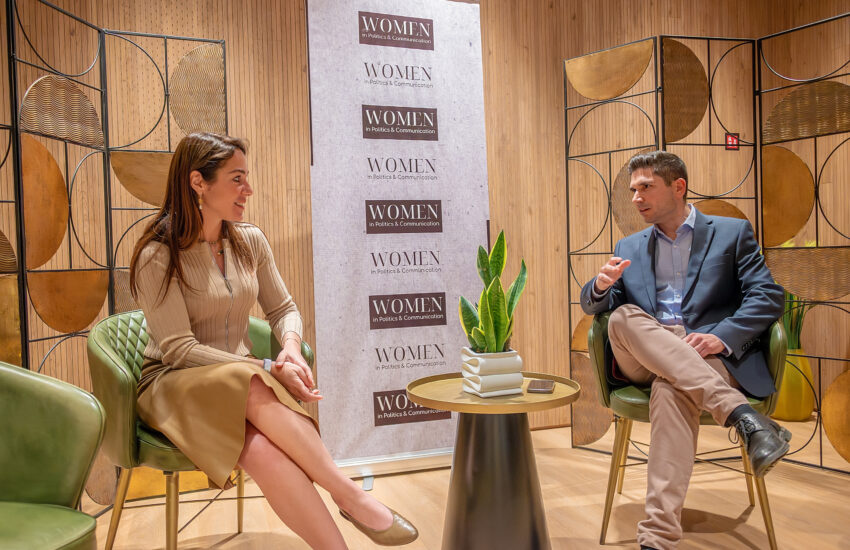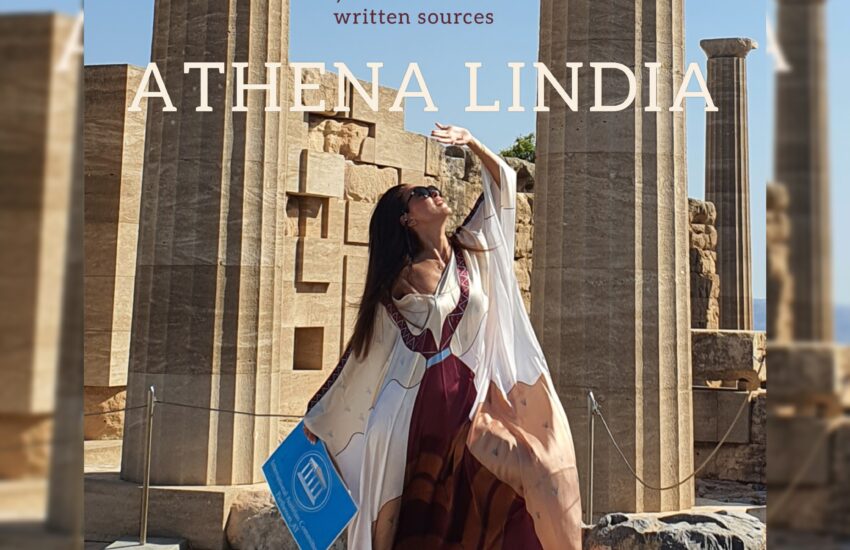Οι περιπέτειες των Γλυπτών του Παρθενώνα – The brig Mentor
“Mayday, Mayday, Mayday, εδώ βεργαντίνο Mentor!
Mayday, Mayday, Mayday, εδώ βεργαντίνο Mentor!
Mayday, Mayday, Mayday, εδώ βεργαντίνο Mentor!
Είμαστε στον Κάβο Μαλιά, στα Κύθηρα… ισχυροί άνεμοι και θαλασσοταραχή μας έριξαν στα βράχια.., μπαίνουν νερά.., άνθρωποι στη θάλασσα.., βυθιζόμαστε πολύ γρήγορα! Xρειαζόμαστε άμεση βοήθεια, όβερ!„ Καπετάνιος William H. Eglen (επινοημένο σήμα κινδύνου για το πώς πιθανότατα ο καπετάνιος θα καλούσε σε βοήθεια… αν είχε εφευρεθεί ο ασύρματος το 1800).
Το πλοίο γρήγορα βυθίστηκε, παρασύροντας στο βυθό της θάλασσας όλα τα κιβώτια με τις ανεκτίμητες αρχαιότητες. Όλοι οι επιβαίνοντες (πλήρωμα και επιβάτες) διασώθηκαν και περιθάλφθηκαν από τους ντόπιους και το πλήρωμα του πλοίου “Ανίκητος”, που έπλεε υπό αυστριακή σημαία και έτυχε να είναι αγκυροβολημένο στο λιμάνι. Ασφαλείς πλέον στην ακτή του Αβλέμονα, ανάμεσα στους επιβάτες βρίσκονταν και οι άνθρωποι του Λόρδου ‘Ελγιν που συνόδευαν το πολύτιμο φορτίο: ο γραμματέας του, William Richard Hamilton, ο τοπογράφος-αρχαιολόγος, καπετάνιος William Leake, ο καπετάνιος πυροβολικού, υπολοχαγός John Squire, καθώς και τρεις άλλοι άνδρες που αναφέρονται ως υπηρέτες των παραπάνω επιβατών. Ένοιωθαν βέβαια τυχεροί που σώθηκαν αλλά την ίδια στιγμή συνειδητοποιούσαν με αγωνία το πόσο δύσκολη θα ήταν η ανέλκυση και διάσωση των ναυαγισμένων Γλυπτών.
Άμεσα ο Καπετάνιος William H. Eglen και ο Hamilton ενημέρωσαν τον Έλγιν για το περιστατικό και το ίδιο άμεσα, έλαβαν την εντολή να παραμείνουν στα Κύθηρα για όσο χρόνο χρειαστεί μέχρι να ανακτήσουν το φορτίο με τις αρχαιότητες. Έτσι η επιχείρηση διάσωσης των Γλυπτών ξεκίνησε: μια ομάδα Ελλήνων σφουγγαράδων από την Κάλυμνο, την Ύδρα, τις Σπέτσες και τα Κύθηρα, απλοί άνθρωποι, που δεν ήξεραν ούτε τ᾽ όνομά τους να υπογράψουν, προσελήφθησαν για να πραγματοποιήσουν την ανέλκυση των Γλυπτών. Οι δύτες, κατά τον αγώνα τους, με αναρίθμητες βουτιές και με κομμένη την ανάσα, προσπαθώντας να ανασύρουν το κάθε ένα από τα ασήκωτα κιβώτια στην επιφάνεια, κατέστρεψαν ένα μεγάλο μέρος του ανωτέρου τμήματος του πλοίου για να αποκτήσουν πρόσβαση στο εσωτερικό του τμήμα. Στις 9 Ιουνίου 1804 οι δύτες εντόπισαν και ανέλκυσαν το τελευταίο (16ο) κιβώτιο και λίγο αργότερα ένα Μαρμάρινο Θρόνο (Θρόνος με την αναπαράσταση των Τυραννοκτόνων, τον οποίο ο Έλγιν επίσης απέκοψε, και σήμερα βρίσκεται στο Μουσείο J. Paul Getty στο Λος Άντζελες και είναι γνωστός ως ο θρόνος του Έλγιν).
Τα ανασυρόμενα, διασωθέντα κιβώτια που περιείχαν τα Γλυπτά του Παρθενώνα καθώς και άλλα ευρήματα, παρέμειναν στην ακτή του Αβλέμονα καλυμμένα με φύκια, θάμνους και μεγάλες πέτρες προκειμένου να προστατεύονται από τον χειμώνα και την ηλιακή ακτινοβολία. Βρίσκονταν υπό διαρκή φύλαξη από στρατιώτες της τοπικής αυτοδιοίκησης και περίμεναν εκεί εκτεθειμένα στην ακτή έως το Φεβρουάριο του 1805! Κατόπιν φορτώθηκαν στο πολεμικό πλοίο „The Lady Shaw Stewart“, και μεταφέρθηκαν στην Αγγλία όπου και εντάχθηκαν μαζί με τα υπόλοιπα Γλυπτά στη συλλογή του Ελγιν, καθώς το Mentor ήταν το πρώτο από τα τρία πλοία που φορτώθηκαν με αρχαιότητες που αφαιρέθηκαν από τον Παρθενώνα.
Είναι ενδιαφέρον να επισημανθεί ότι, ο ίδιος ο Έλγιν είχε ασκήσει πιέσεις στον καπετάνιο του Mentor να επιτρέψει τη φόρτωση περισσοτέρων κιβωτίων και μεγαλυτέρων γλυπτών στο πλοίο, κάτι που ωστόσο αρνήθηκε ο Eglen, ο οποίος επικαλέστηκε λόγους ασφαλούς πλεύσης του σκάφους.
Επιπλέον σε επιστολή του προς τον υποπρόξενο της Βρετανίας στα Κύθηρα, Εμμανουήλ Καλούτση (25 Οκτωβρίου 1802), ζητούσε: „να καταβάλετε κάθε δυνατή προσπάθεια για τη διάσωση του πλοίου, όσο και του φορτίου“, και συνέχιζε αναφέροντας παραπλανητικά: „Μέσα σε αυτό υπήρχαν κάποια κιβώτια που περιείχαν λίθους, καμιάς ιδιαίτερης αξίας μεν, αλλά πολύ σημαντικούς για μένα τον ίδιο, ώστε να θέλω να τους εξασφαλίσω“.
The Adventures of the Parthenon Sculptures – Mentor
“Mayday, Mayday, Mayday, this is brig Mentor!
Mayday, Mayday, Mayday, this is brig Mentor!
Mayday, Mayday, Mayday, this is brig Mentor!
We’re in Cape Maleas, Kythera… strong winds and rough seas have driven us onto the rocks…we have a leak and the lower compartment is flooding…men abandon ship, we’re sinking too fast! We need immediate assistance, over!“ Captain William H. Eglen. (fabricated distress signal of how the Captain would have call for help… if the radio was invented back in 1800).
The ship quickly sank, dragging all the boxes of priceless antiquities to the bottom of the sea. All those on board (crew and passengers) were rescued and treated by the locals and the crew of the ship “Anikitos”, which was sailing under the Austrian flag and happened to be anchored in the harbour.
Safe now on the shore of Avlemonas, among the passengers were Lord Elgin’s men who accompanied the precious cargo: his secretary, William Richard Hamilton, the surveyor-archaeologist, Captain William Leake, the artillery captain, Lieutenant John Squire, and three other men named as servants of the above mentioned passengers. They certainly felt lucky to have been rescued but at the same time they were anxiously aware of how difficult it would be the hauling up of the shipwrecked Sculptures.
Instantly Captain William H. Eglen and Hamilton informed Elgin of the incident and received orders to remain in Kythera for as long as necessary until they could recover the cargo of antiquities. Thus the operation to rescue the Sculptures began: a group of Greek sponge divers from Kalymnos, Hydra, Spetses and Kythera -ordinary people who did not even know how to sign their own names-, were hired to carry out the recovery of the Sculptures. The divers, in their struggle, after countless dives and breathlessness, in their effort to haul each of the weighty boxes to the surface, destroyed a large area of the upper part of the ship to gain access to its inner part. On June 9, 1804, the divers located and recovered the last (16th) crate and shortly thereafter the Marble Throne (Throne with the representation of the Tyrannicides, which Elgin also detached and today is located in the J. Paul Getty Museum in Los Angeles, known as Elgin’s Throne).
The retrieved, salvaged crates containing the Parthenon Sculptures as well as other artifacts remained on the coast of Avlemonas covered with seaweed, shrubs and large stones to protect them from winter and sunlight. They were under constant guard by soldiers of the local government and waited there exposed on the shore until February 1805! They were then loaded onto the warship “The Lady Shaw Stewart”, and transported to England where they joined the rest of the sculptures in Elgin’s collection, as the Mentor was the first of three ships loaded with antiquities removed from the Parthenon.
It is interesting to note that, Elgin himself had applied pressure to the captain of Mentor to allow more boxes and larger sculptures to be loaded onto the ship, but this was refused by Eglen, who cited reasons of safe sailing.
Furthermore, in a letter to the British Vice Consul in Kythera, Emmanuel Kaloutsis (25 October 1802), requested: “to make every possible effort to save the ship as well as the cargo“, and concealed the exact contents of the boxes, misleadingly stating: “Inside it [ the ship] were some crates containing stones, of no particular value, but of great importance to myself, so that I wanted to secure them“.
Mag. Alexandra Pistofidou
Vorstandssekretärin IARPS
Präsidentin und Gründerin Österreichisches Komitee für die Rückgabe der Parthenon Skulpturen



